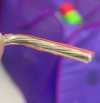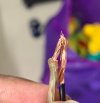Love4sound
Well-Known Member
Dear Fm’s
While doing wiring work for my atmos speakers today the tech advised me to replace the speaker cables. From outside it looks like fungus have formed due to moist and damaged the wires. So just to be sure I cut the wires and checked them side by side with a brand new wire. From outside it does look greenish but inside the copper wires seems fine. Please have a look at the image and advise. The new wire marginally shines better compared to the 2-3 year old wires
While doing wiring work for my atmos speakers today the tech advised me to replace the speaker cables. From outside it looks like fungus have formed due to moist and damaged the wires. So just to be sure I cut the wires and checked them side by side with a brand new wire. From outside it does look greenish but inside the copper wires seems fine. Please have a look at the image and advise. The new wire marginally shines better compared to the 2-3 year old wires



